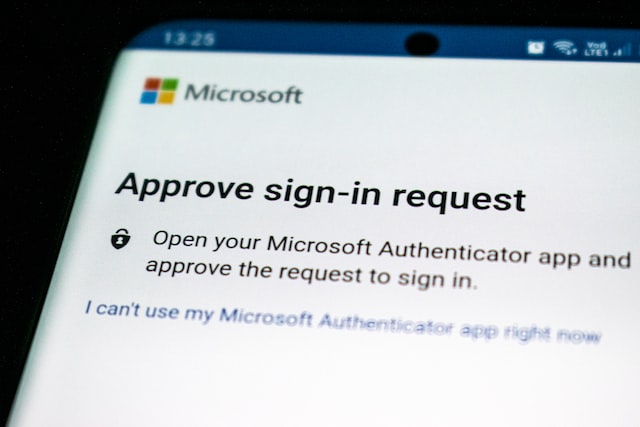Cybersecurity in the age of AI: what SMBs need to know
Artificial Intelligence is already changing how we work — but it’s also changing how we get attacked. AI in cybersecurity is a rapidly evolving battlefield, and small and medium-sized businesses are firmly in the crosshairs.
by Drew Aspland, 14th May 2025
Cybersecurity in the age of AI: what SMBs need to know
There’s a long-standing myth that cybercriminals only go after big corporations with massive bank accounts and secret-sauce data. In reality, SMBs are often easier targets: fewer resources, inconsistent defences, and staff who don’t get regular security training. Combine that with the rise of AI-powered attack tools, and suddenly your friendly neighbourhood IT support (that’s us!) becomes your business’s first and last line of defence.
AI isn’t just a business tool — it can also be a weapon
AI is being used on both sides of the cybersecurity war. On one side, it’s helping to detect threats faster, automate responses, and outpace human reaction time. On the other, it’s being used by attackers to make phishing emails sound more convincing, launch large-scale attacks more efficiently, and bypass traditional defences.
In the past, most phishing emails were riddled with spelling errors and obviously dodgy formatting. Today, AI language models like ChatGPT can craft near-perfect emails that mimic real colleagues, suppliers or customers. Some even generate unique, contextualised content for each target. It’s not just spam anymore — it’s personalised manipulation, done at scale.
Deepfake technology is also being used to impersonate voices or video calls. There have already been cases where finance teams were duped into transferring money after receiving a convincing AI-generated voicemail or video call from someone who appeared to be their CEO.
The bottom line: these tools aren’t futuristic threats — they’re already in the wild.

AI cybersecurity for your small business: what can you actually do?
This isn’t the part where we say “panic and unplug everything.” It’s the part where we say you need to get realistic about your defences. AI-powered threats require smarter countermeasures, but most of them are well within reach of an SMB budget.
The basics still matter — and they’re more important than ever. If you’re not already doing these, start now:
- Enable Multifactor Authentication (MFA) across all systems. Even if an attacker gets your password, they still can’t get in.
- Use a password manager and avoid password reuse like the plague. AI can crack weak or reused passwords in seconds.
- Train your staff to recognise phishing attempts — and refresh that training regularly. Even savvy users get caught by convincing AI scams.
- Keep everything updated — operating systems, software, routers, firewalls. AI can exploit known vulnerabilities that haven’t been patched.
- Back up your data, test those backups, and store at least one copy off-site or offline. AI-driven ransomware is not theoretical.
You don’t have to go it alone, either. If you’ve got an IT partner worth their salt, they should be helping you put these safeguards in place — not just waiting for disaster to strike.
AI-powered cybersecurity defences
Before we dive into the tools that can help, it’s worth understanding how AI fits into the cybersecurity toolkit. These systems aren’t just fancy rule-based programs — they’re adaptive, constantly learning from new threats and behaviours across thousands of networks and endpoints. That makes them ideal for detecting anomalies that human teams or traditional defences might miss.
AI-powered security tools don’t sleep, don’t get distracted, and don’t ignore warning signs because it’s Friday at 4:45pm. They can scan millions of data points in seconds, correlating patterns that would take a human analyst hours or days to spot.
They’re particularly effective at identifying so-called “zero-day threats” — vulnerabilities that haven’t been patched or even discovered by software vendors. These are the kinds of exploits that traditional antivirus systems often miss because there’s no known signature to detect. AI doesn’t need a signature; it looks at behaviour.
The good news is that AI is also on your side — if you’re using the right tools. Security software today is increasingly “smart,” learning from data patterns to detect threats in real-time. Think of it like a bouncer who gets smarter after every attempt someone makes to sneak past the door.
Solutions like Microsoft Defender and ESET use AI to flag unusual activity, detect zero-day threats, and automatically respond to emerging attacks. These tools can watch your systems 24/7, faster and more consistently than any human team could manage.
Even basic email filtering has become more effective thanks to AI, recognising not just keywords but suspicious patterns, attachment types, and behavioural red flags.
For SMBs, this means you can deploy high-end defences without hiring a full-blown cybersecurity team. You just need to know what to use — and how to use it.

Caution without paralysis
It’s also important to understand the limits of AI in cybersecurity. These tools are only as good as the data they’re trained on and the context in which they operate. They can produce false positives, flagging harmless activity as suspicious — or worse, false negatives, letting a threat slip through because it mimicked something benign. This is why human oversight remains critical.
Additionally, there’s the risk of complacency. When businesses rely too heavily on automated systems, they sometimes let their guard down in other areas. Staff training, basic digital hygiene, and clear response protocols can fall by the wayside under the assumption that “the software has it covered.”
It doesn’t, not completely. Good cybersecurity still requires a blend of tools, training, and clear processes. AI in cybersecurity is just one part of a larger strategy.
Of course, using AI to protect your business also comes with responsibility. It’s easy to become overly reliant on tech and forget the human element. No tool is infallible, and many are only as effective as the person configuring them.
There are also valid concerns about data privacy. Some AI-based security solutions process your data in the cloud — meaning sensitive business or client information could leave your network. That’s why it’s critical to work with reputable vendors and understand exactly what data is being shared and stored.
Transparency, good documentation, and the ability to control settings matter. You don’t just need security — you need trustworthy security.
A new world of AI cybersecurity
AI is transforming cybersecurity faster than most businesses can keep up. But that doesn’t mean you’re doomed — it just means you need to adapt.
Think of AI not as a silver bullet, but as a smarter toolbox. One that can help you punch above your weight, defend your business more effectively, and sleep a little easier at night.
If you’re not sure where to start, we’re here. Whether it’s reviewing your existing setup, implementing smarter security tools, or simply helping your team stop clicking suspicious links — we’ve got your back.
And if you are already using AI? Let’s make sure it’s working for you — not leaving the back door wide open.